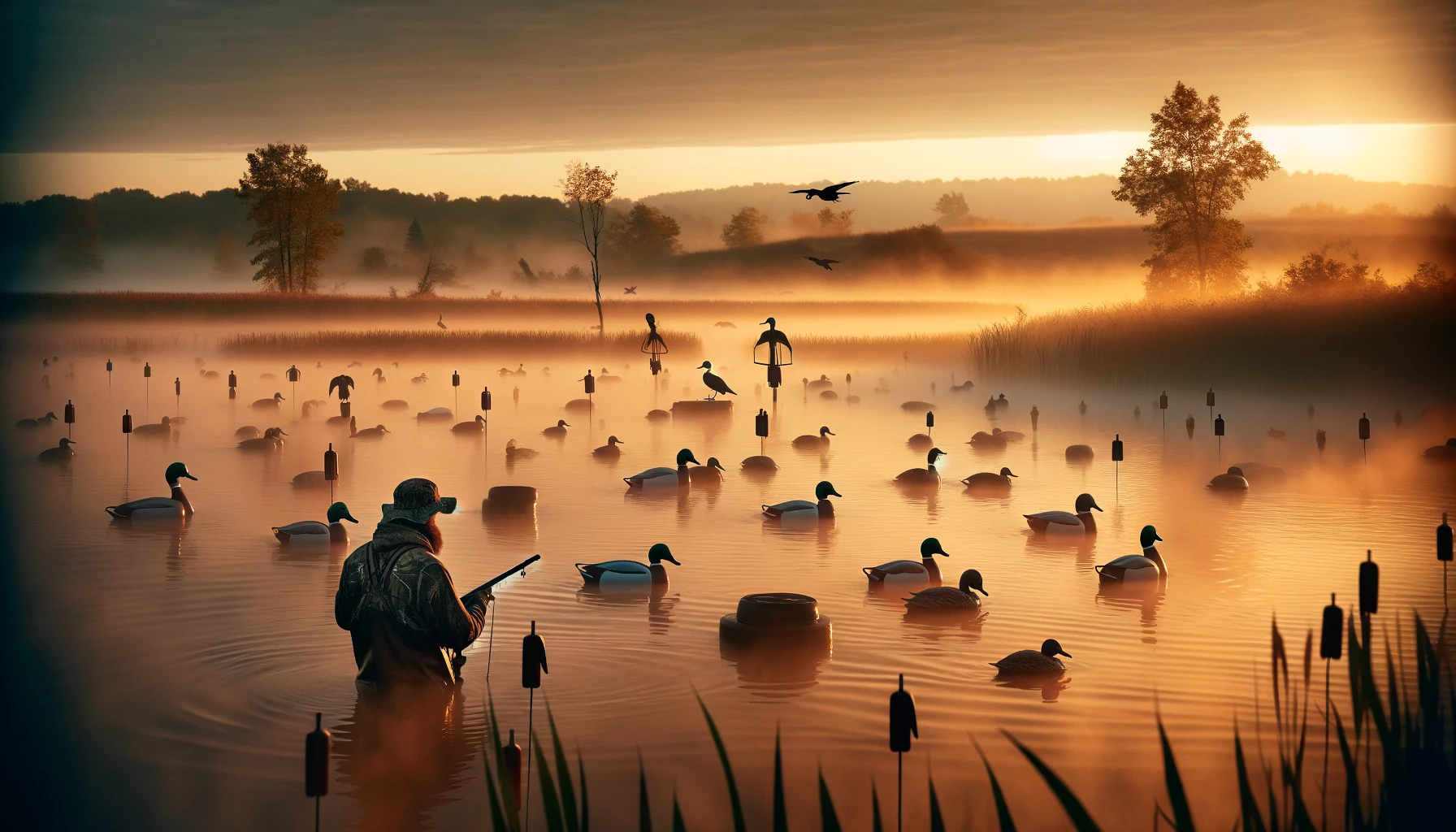
Table of Contents
Duck hunting is an art form that combines skill, patience, and a deep understanding of avian behavior. At the heart of this pursuit lies the strategic placement of duck decoys—a technique that can significantly enhance your hunting success. This comprehensive guide delves into the intricacies of setting up duck decoys, offering both novice and seasoned hunters insights into crafting an irresistible spread.
Embarking on this journey, we’ll explore the principles behind effective decoy arrangements, the selection of gear, and advanced strategies to mimic natural duck behaviors, ensuring your next hunting trip is both productive and rewarding.
To master decoy setup, one must first understand the quarry. Ducks are migratory birds that follow specific routes, known as flyways, across continents. Their behavior, including feeding, resting, and mating patterns, is influenced by seasonal changes, habitat types, and the presence of predators.
Ducks frequent a variety of water bodies, from vast lakes and marshes to small ponds and rivers. Each species has preferences for certain environments—knowing these can help you choose the most effective decoy types and setups.
The backbone of any duck decoy spread, floaters are versatile and effective in various water conditions. We’ll explore different materials, species representations, and how to use them to simulate natural duck gatherings.
Ideal for field setups near water bodies or dry feeding areas, full-body and shell decoys add realism to your spread on land. Learn how to position these decoys to attract flying ducks looking for a place to rest or feed.
From spinning wing decoys to swimming and feeding simulators, motion decoys can be the key to breaking the wariness of late-season ducks. Discover the latest innovations in motion decoys and how to integrate them seamlessly into your spread.
The effectiveness of your decoy spread is directly tied to its ability to blend into the natural environment. This section covers strategies for using natural vegetation and terrain features to conceal decoys, making them more appealing to cautious ducks.
Tailoring your decoy spread to match the day’s hunting conditions is crucial. We’ll break down several configurations, including the classic “J” and “U” shapes, and discuss how weather, wind direction, and duck species influence spread design.
Wind direction and speed can dramatically affect duck movement and behavior. Learn how to adjust your decoy spread in response to changing weather patterns to keep your setup attractive throughout the hunting day.
An effective decoy spread invites ducks to land by providing clear, open areas within the setup. Detailed here are techniques for creating these landing zones to guide ducks into optimal shooting range.
A static decoy spread is a missed opportunity. This section delves into strategies for arranging decoys to mimic feeding, resting, and alert behaviors, making your spread irresistible to passing ducks.
Regular maintenance ensures your decoys remain effective throughout the season. Tips for cleaning, repairing, and periodically adjusting your spread based on observation and success rates are discussed to keep your setup fresh and appealing.
Setting up duck decoys is a dynamic challenge that requires flexibility, observation, and an ongoing willingness to learn from both successes and failures. By applying the strategies outlined in this guide, hunters can elevate their decoy setups, attracting more ducks and enhancing their hunting experiences.
The journey from novice to expert in duck decoy setup is both challenging and rewarding. With each hunting trip, you’ll gain insights and develop intuition, continually refining your approach to decoy placement. Remember, the ultimate goal is to enjoy the hunt, respect the wildlife, and share the tradition of waterfowl hunting with future generations.
Technology is revolutionizing the way we hunt and shoot. From GPS mapping and ballistics calculators…
Hunting during cold weather isn’t just about layering up your boots matter. When you’re sitting…
When you’re building or upgrading your AR-style rifle, one of the key decisions you’ll face…
When it comes to tactical rifle scopes, not all optics are created equal. The differences…
In today’s age of high-tech hunting, drones have transformed the way hunters scout terrain, locate…
Every hunter knows that a steady shot can make or break a hunt. Whether you’re…
This website uses cookies.